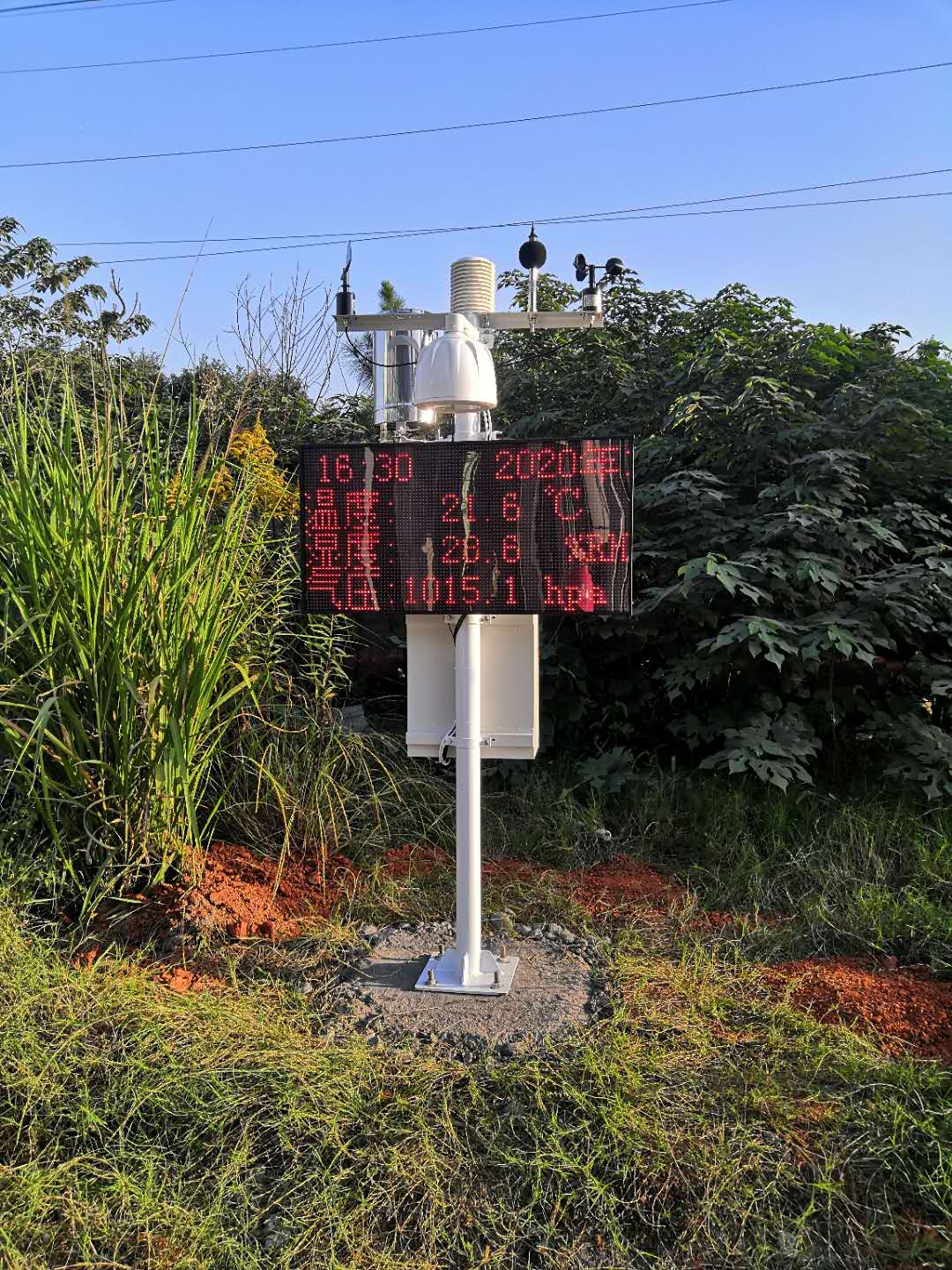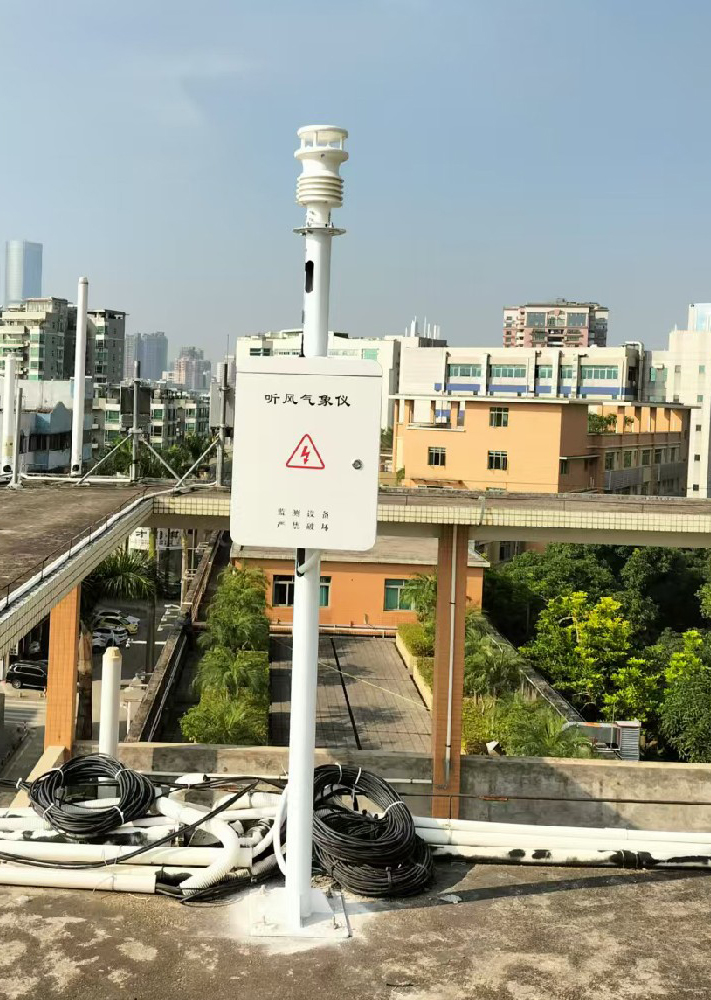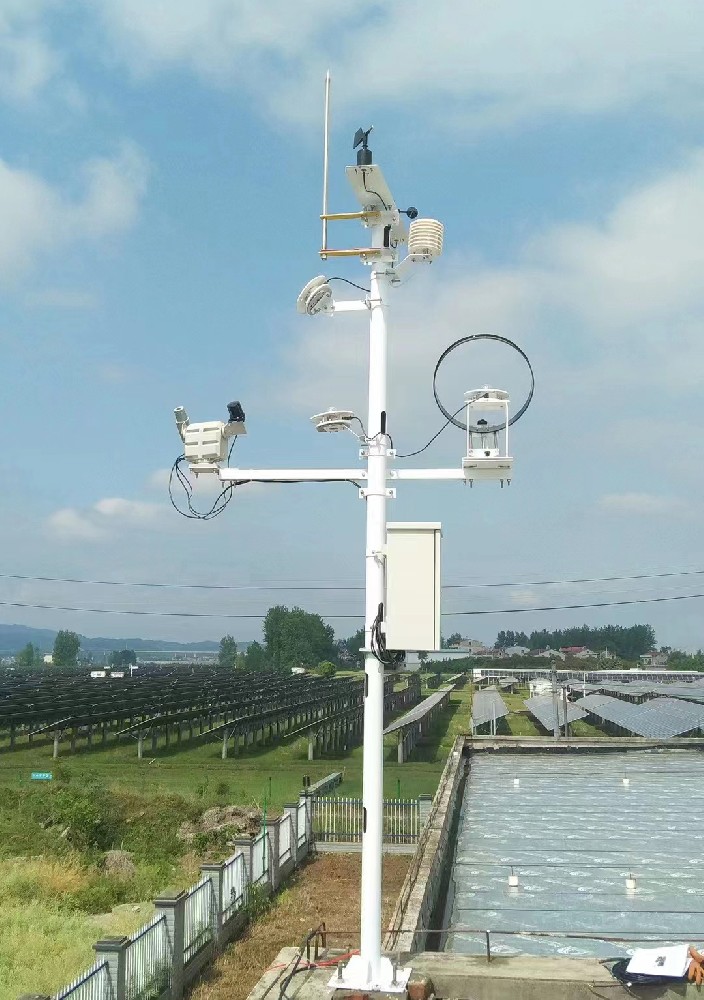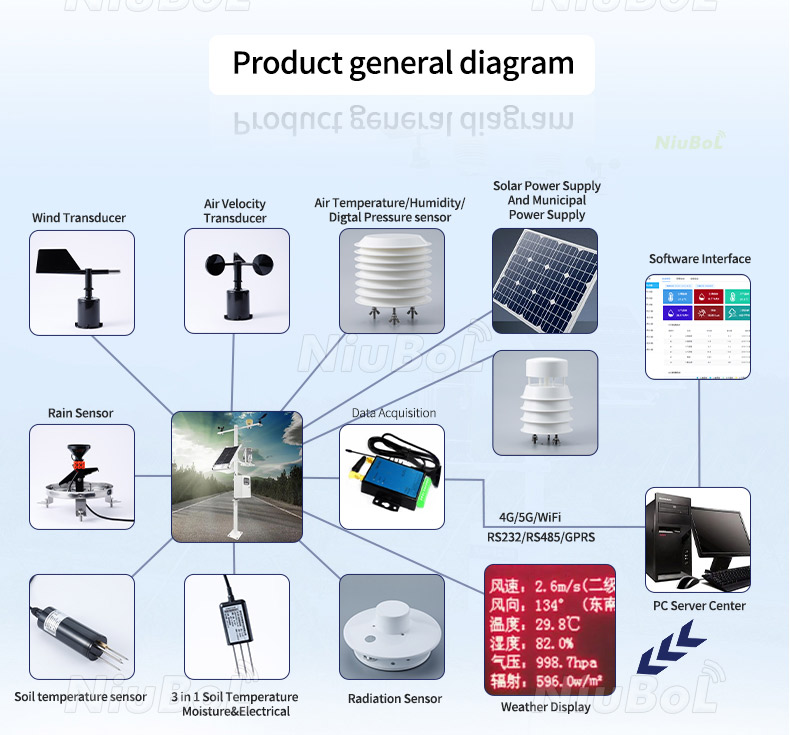

— Blogs —
—Products—
 Consumer hotline +8618073152920
Consumer hotline +8618073152920 WhatsApp:+8615367865107
Address:Room 102, District D, Houhu Industrial Park, Yuelu District, Changsha City, Hunan Province, China
Product knowledge
Time:2025-11-24 16:43:49 Popularity:5
A weather monitoring station is an integrated system designed for systematic observation of key atmospheric parameters, including temperature, humidity, atmospheric pressure, wind speed, wind direction, precipitation, and light intensity. Through long-term, continuous data collection, it reflects regional climate characteristics and provides scientific basis for weather forecasting, disaster early warning, agricultural production, transportation management, scientific research, and environmental protection.
A weather monitor is the core measurement unit within the station, responsible for single- or multi-point meteorological data acquisition and transmission. Modern weather monitors integrate high-precision sensors and data processing modules, supporting multiple signal outputs and remote communication protocols, laying the foundation for automated and intelligent meteorological monitoring.
The operation relies on the coordinated functioning of multiple sensors:
1. Temperature & Humidity Sensors: Detect changes using resistance, capacitance, or semiconductor elements, converting physical quantities into electrical signals.
2. Atmospheric Pressure Sensors: Measure pressure via piezoresistive, capacitive, or MEMS technology.
3. Wind Speed & Direction Sensors: Mechanical types use rotating cups and vanes; ultrasonic types calculate wind parameters from sonic pulse travel-time differences.
4. Precipitation Sensors: Commonly tipping bucket, optical scattering, or weighing methods.
5. Light Intensity Sensors: Employ photodiodes or photoresistors.
6. Soil Moisture Sensors: Capacitive or resistive sensors measure soil dielectric constant or impedance to determine volumetric water content.
7. Data Acquisition & Transmission Module: Aggregates sensor data and transmits via wired or wireless channels to monitoring terminals or cloud platforms.
In principle, weather monitoring stations ensure synchronization and high accuracy across multiple parameters through coordinated multi-sensor acquisition.

Typical components include:
- Sensor Module: Integrated temperature/humidity, pressure, wind, precipitation, light intensity, and optional soil sensors.
- Data Acquisition Unit: Supports analog/digital signals and protocols such as Modbus, RS485, LoRa, 4G/5G.
- Electronic Compass Module: Provides automatic orientation calibration, eliminating strict north-alignment requirements.
- Protective Enclosure: UV-resistant, waterproof (IP65/IP66), dust-proof for long-term outdoor use.
- Support Structure: Lightweight and portable for easy transport and field installation.
- Power Module: Mains electricity, solar panels + battery, or hybrid solutions.

| Parameter | Measurement Method | Measurement Range | Resolution |
| Temperature | Resistance/Semiconductor | -40 ~ +80℃ | 0.1℃ |
| Humidity | Capacitive | 0 ~ 100% RH | 0.1% RH |
| Atmospheric Pressure | Piezoresistive/Capacitive/MEMS | 10 ~ 1100 hPa | 0.1 hPa |
| Wind Speed | Ultrasonic/Mechanical | 0 ~ 60 m/s | 0.1 m/s |
| Wind Direction | Ultrasonic/Mechanical | 0 ~ 360° | 1° |
| Precipitation | Tipping Bucket/Optical/Weighing | 0–4 mm/min (up to 500 mm/h in heavy rain) | 0.2 mm |
| Light Intensity | Photodiode/Photoresistor | 0 ~ 200,000 lux | 10 lux |
| Soil Moisture | Capacitive/Resistive | 0 ~ 100% VWC | 0.1% |
Users can select mechanical or ultrasonic sensors based on accuracy, durability, and environmental requirements.

1. Analog Output: 4–20 mA, 0–5 V — suitable for PLC and local systems.
2. Digital Output: RS485, Modbus RTU/ASCII — stable long-distance transmission.
3. Wireless Communication: LoRa, NB-IoT, 4G/5G — enables remote monitoring.
4. Data Interfaces: HTTP, MQTT, API — easy integration with third-party platforms.
- Representativeness: Site must reflect regional climate without local disturbances.
- Height & Openness: Wind sensors 1.5–10 m above ground; clear radius ≥10× pole height.
- Safety: Avoid flood, landslide, avalanche, or high-traffic areas.
- Ground poles, concrete bases, or adjustable-height towers meeting load and wind-resistance standards.
- Mains or solar + lithium battery for uninterrupted power.
- Install lightning rods and surge protectors.
- Keep signal cables away from high-voltage lines.
- Use waterproof connectors and perform regular inspections.
1. Secure and level the support structure; install sensors horizontally or use electronic compass for orientation.
2. Connect power and data cables; perform system self-test.
3. Verify all sensor readings and ensure stable operation.

| Symptom | Possible Cause | Troubleshooting Method |
| No data output | Power failure/loose wiring | Check power supply and connections |
| Abnormal wind readings | Blocked airway/sensor failure | Clean airway or replace sensor |
| No rainfall response | Tipping bucket jammed/dust | Clean bucket or optical sensor |
| Abnormal temp/humidity | Interference/sensor aging | Check location or replace sensor |
| Data delay | Unstable communication | Check network and acquisition module |
| Abnormal soil moisture | Incorrect burial depth/poor contact | Adjust depth, clean sensor |
| Abnormal light reading | Obstruction or dust | Clean sensor, adjust angle |
| Unstable power | Voltage fluctuation | Use stabilized power supply or UPS |
| Device offline | Weak signal/interference | Reposition antenna or add gateway |
| Data fluctuation | Sensor aging/sudden environment change | Check sensor status, eliminate interference |
1. Weather Forecasting & Disaster Early Warning: Real-time data for typhoon, heavy rain, and drought alerts.
2. Agricultural Production: Guides irrigation, fertilization, harvesting, and disaster mitigation.
3. Transportation Safety: Provides road slipperiness, visibility, and wind data for scheduling.
4. Urban Planning: Long-term climate data for city design and environmental improvement.
5. Scientific Research & Education: Supports climate studies and field teaching.
6. Remote & Aquatic Monitoring: Buoy-based or automatic stations with satellite communication.
- Parameters: Choose required sensor combinations (temp/humidity, wind/rain, soil, light, etc.).
- Environmental Durability: Prioritize waterproof, dustproof, and corrosion-resistant models.
- Communication: Ensure compatibility with existing platforms.
- Installation Environment: Select appropriate mounting and sensor types for plains, mountains, or water areas.
- Maintenance: Prefer modular, easy-to-service designs.

No—built-in electronic compass automatically calibrates direction.
Ultrasonic: wind speed ±0.1 m/s, direction ±1°.
Yes—tipping bucket/optical sensors support up to 500 mm/h.
Yes—IP66 enclosure, UV-resistant, waterproof, and dustproof.
Typically 5–30 cm, depending on crop root zone.

Wired: up to 500 m; Wireless: 2–5 km (extendable with antennas/gateways).
Yes—supports Modbus, HTTP, and API.
Check power, wiring, signal strength, and platform status.
Yes—automatic stations with satellite communication available.
Ultrasonic wind sensors require no mechanical calibration; other sensors recommended annually.
CE, ISO9001, RoHS, and calibration certificates.
Weather monitoring stations and monitors are the cornerstone of modern meteorological observation. Through multi-sensor collaboration, data acquisition, and remote transmission, they deliver high-precision, real-time meteorological information. Proper site selection, scientific installation, and routine maintenance are critical to ensuring data accuracy and system reliability. Their applications span weather forecasting, disaster warning, agricultural management, transportation safety, urban planning, environmental protection, and scientific research. With ongoing advancements in intelligence and networking, meteorological monitoring equipment will continue to evolve, providing even stronger data support for safe production, resource management, and scientific exploration worldwide.
Prev:What is Meteorological Detection Equipment?
Next:Ultrasonic Compact Weather Station: Technical Analysis and Application Guide
Related recommendations
Sensors & Weather Stations Catalog
Agriculture Sensors and Weather Stations Catalog-NiuBoL.pdf
Weather Stations Catalog-NiuBoL.pdf
Related products
 Combined air temperature and relative humidity sensor
Combined air temperature and relative humidity sensor Soil Moisture Temperature sensor for irrigation
Soil Moisture Temperature sensor for irrigation Soil pH sensor RS485 soil Testing instrument soil ph meter for agriculture
Soil pH sensor RS485 soil Testing instrument soil ph meter for agriculture Wind Speed sensor Output Modbus/RS485/Analog/0-5V/4-20mA
Wind Speed sensor Output Modbus/RS485/Analog/0-5V/4-20mA Tipping bucket rain gauge for weather monitoring auto rainfall sensor RS485/Outdoor/stainless steel
Tipping bucket rain gauge for weather monitoring auto rainfall sensor RS485/Outdoor/stainless steel Pyranometer Solar Radiation Sensor 4-20mA/RS485
Pyranometer Solar Radiation Sensor 4-20mA/RS485
Screenshot, WhatsApp to identify the QR code
WhatsApp number:+8615367865107
(Click on WhatsApp to copy and add friends)
